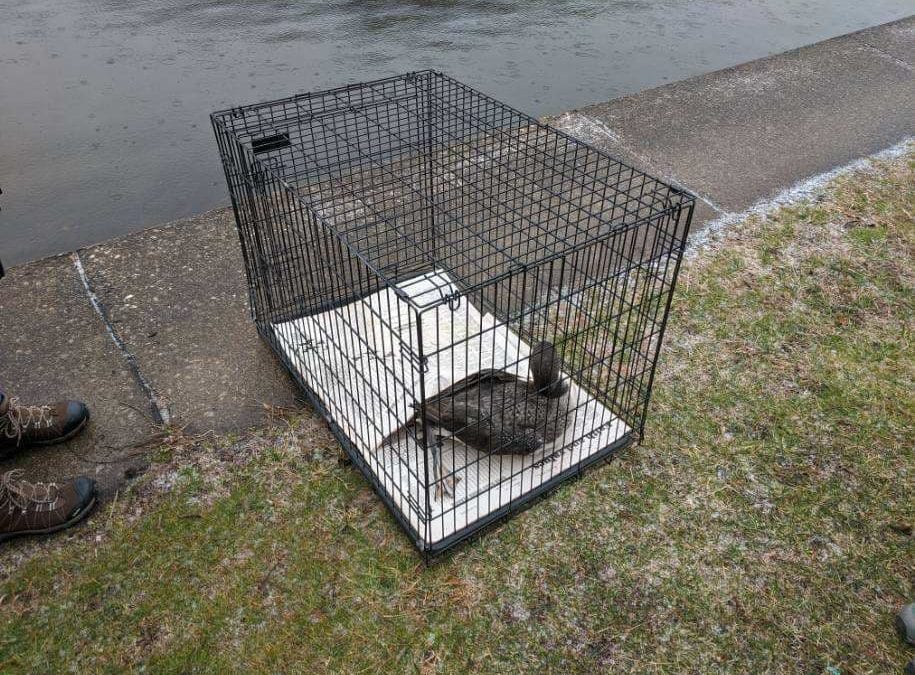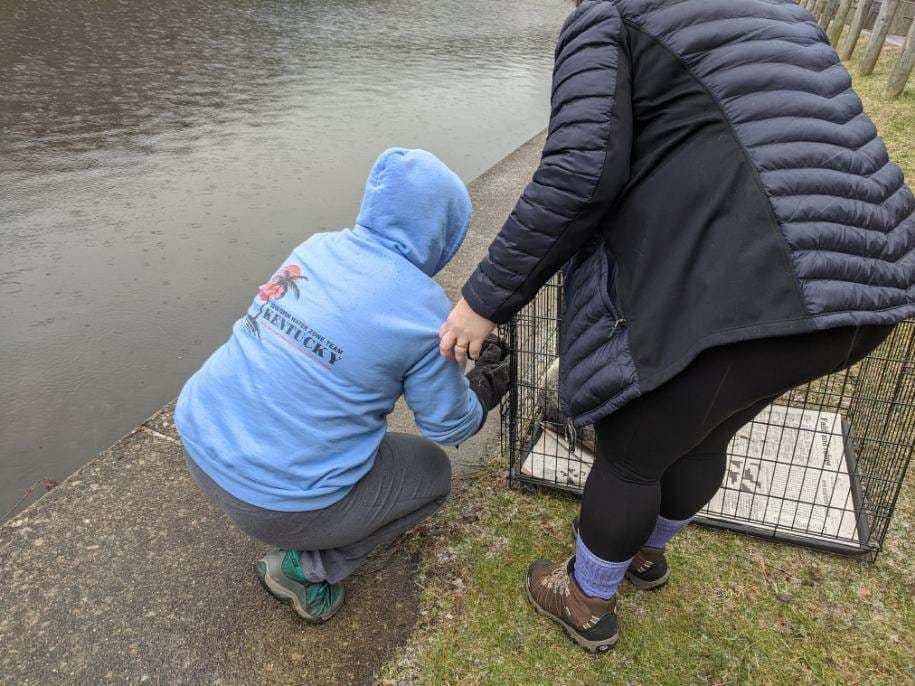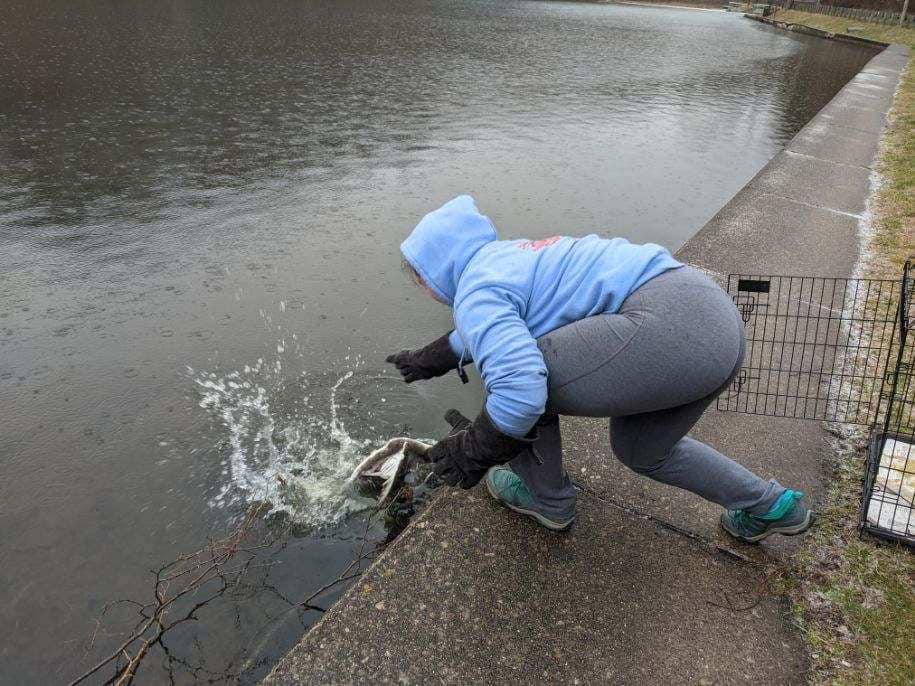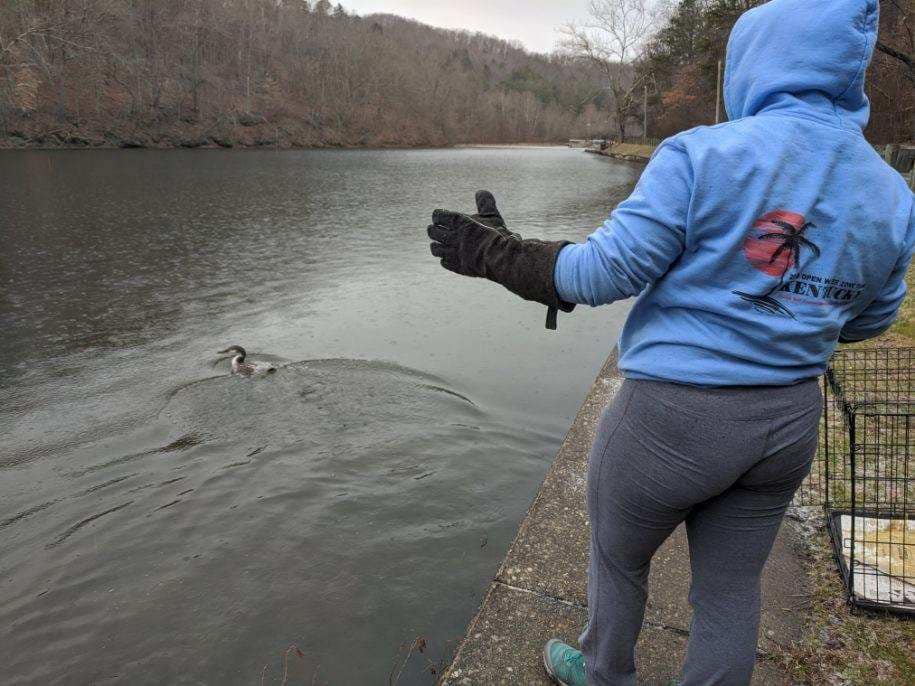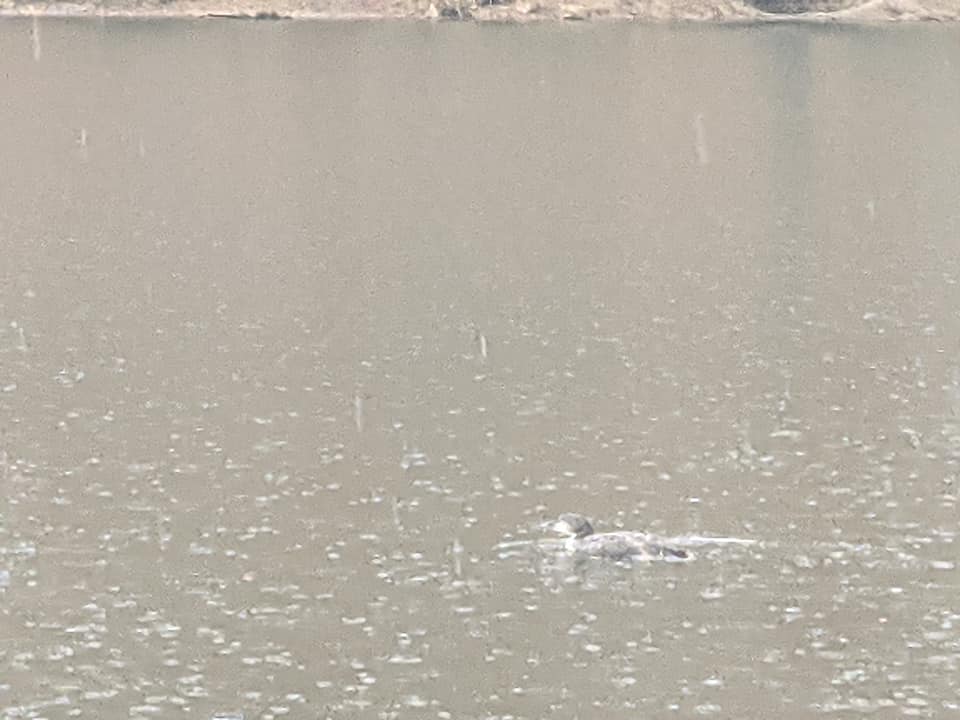When I left the office yesterday, I looked down and saw bird poop on my shoe. I thought it’s not every day that you get pooped on by a loon. Technically she bit me too.
Loons are not common in our area. When I texted a friend to help me with it, he ignored my first three texts. Finally he said he didn’t even know what a loon was. Obviously, he had never canoe camped in the northern lakes. The call of the loon is a common experience of the northern lakes and makes its way into literature and memories.
Common Loons are striking black and white birds that are reasonably large. (Think large duck or small goose.) In the summer, the adults have a spotted black and white body with a black head cap. In the quiet of the evening, they will call their eerie call that could be mistaken for a coyote. They are memorable enough to be on Canadian coins which are appropriately called loonies.
In the water, they are powerful, agile divers that swim underwater in fast chases. On land, they are clumsy with legs that are too far back on their body to move well. Underwater, the powerful legs allow for speed and maneuverability. Most fish are swallowed underwater. Unlike most birds, loons have solid bones that make them less buoyant and better at diving. Loons can quickly blow air out of their lungs and flatten their feathers to expel air within their plumage. Without this buoyancy, they can dive quickly and swim fast underwater. The loon’s heart slows to conserve oxygen while under the surface.
They can stay underwater for quite a while. We were canoe camping in Canada with M’Kinzy when she was just over 2. About 7 feet from our canoe a loon popped up. M’Kinzy was in the front of the canoe and Matt and I were quietly watching the loon. Until the canoe started to tip, we weren’t really watching M’Kinzy. She was up on the side of the canoe reaching to pet the loon.
Loons are amazing underwater and can fly up to 70 miles an hour while migrating, but they must have water to take off from, they cannot run well enough to fly from land. They only go ashore to mate and incubate eggs. After hatching, the juveniles are on their own at about 12 weeks. Parents leave to migrate south and the juveniles flock up and leave a few weeks later. The juveniles stay in the warmer coastal ocean shores for the next few years. They return north in their third year, but may not breed for several more years. The oldest recorded loon was almost 30 years old when last seen.
I don’t know why these two loons were on shore, but they could not get away from the dog that attacked them. A good Samaritan brought them in on a Saturday morning. The older loon had the breeding plumage. The younger one had the muted greys of a juvenile or a winter non-breeder.
We commonly will see migrating water birds that will mistakenly land on wet highways or parking lots, because they look like rivers and lakes. Even if they do not break legs, the birds will be stranded because they need open water for a long takeoff. Without the breeze to help, they may need a 1/4 mile or more. Sometimes a loon may get stranded on a pond that is too small.
The Common Loon molts all of the wing feathers at the same time in winter and is flightless for a few weeks after molting.
I was happy to examine the birds and find they did not have broken legs, but the damage from the dog was too much for the younger bird and it died shortly after arriving. I examined and we tube fed a nutritious emergency ration, but loons do not do well in captivity.
While my staff is well adept at most of our rehab treatments, loons are uncommon enough and dangerous enough that I was involved. Unlike the falconry hawks, it is not the talons that you must be concerned with and it is not like the beaks bite hard like a parrot’s. Loons spear their fish with strong, sharp beaks. They know if they spear the eyes, the fish cannot see to hide. Loons carry this defense mechanism to humans. A light hand on the neck controlled the birds and prevented any eye damage. Even so, we put them in an open portable cage so they would not feel cornered with a need to protect themselves when it was time to move them out for release.
You soon find out who your friends are when you start texting that you need help releasing a loon. Needless to say, I struck out on the friend and Saturday release, but I was able to sell it as a homeschool experience for a Sunday afternoon trip.
Fast forward to Sunday and Mary Laura and her family took the loon out and released it. Mary Lara said she thought she saw the loon finish eating a fish after release.
Before she was an employee, Mary Lara knitted animals for sale and donated the proceeds to various animal groups. We were the recipient of one of those donations and Mary Lara was a sponsor of our virtual 5K. It is only fitting that she helped to release the loon.
It’s not just donations that allow us to help wildlife. Everyone who brings in pets for care helps us to do these things.
Thanks for the help and support that allows us to help this dog bite victim return to the wild.

